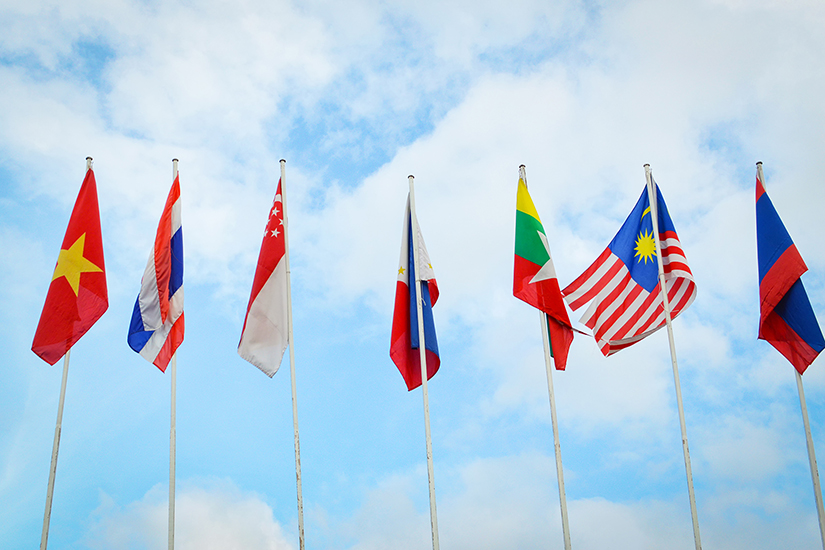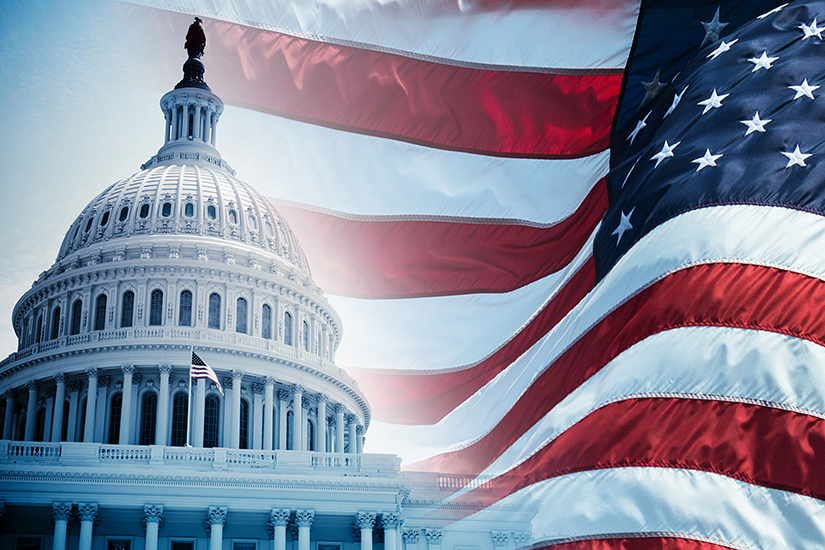One and a half years have passed since the inauguration of the Biden administration in the United States. President Biden has displayed an attitude of placing importance on Southeast Asia as a part of his Indo-Pacific policy since the first days of his administration[1]. Subsequently the administration has devised and implemented a variety of policies aimed at realization of that policy goal. In response to this, the Southeast Asian side has not necessary been in a welcoming mood. Currently, a gap between various expectations and the reality is emerging between the two parties.
Based on the premise of this awareness of the problem, this essay discusses the Biden administration’s policy with respect to Southeast Asia centered on the Association of Southeast Asian Nations (ASEAN), and the reaction of the Southeast Asian side and the prospects going forward.

Perceptions of the United States in Southeast Asia: high initial expectations when the Biden administration was inaugurated
Upon the inauguration of the Biden administration, Southeast Asia strongly expected the United States to once again deepen its engagement in Southeast Asia. The ASEAN Studies Centre at the ISEAS – Yusof Ishak Institute in Singapore conducted an opinion survey of people involved in academia, business, the media, and government in Southeast Asia from the end of 2020 to the beginning of the following year, 2021. According to the results of this survey, under the Trump administration 77% of people replied that the United States’ engagement in Southeast Asia was “decreasing” and a mere 10% replied that it was “increasing” whereas with the Biden administration the results were the exact opposite, with 7% saying engagement would “decrease” and 69% saying it would “increase.” Similarly, in response to the question “Is the US a Reliable Strategic Partner?” the percentage of people who said “Yes” greatly increased from 35% in the previous survey to 55%[2].
The sense of expectation directed at the Biden administration was nostalgia for the United States during the Obama administration. At that time the United States deepened its engagement with the multilateralism of ASEAN, joined the Treaty of Amity and Cooperation in Southeast Asia (TAC), and became an official member of the East Asia Summit (EAS), and in addition President Obama visited Southeast Asia almost every year in order to participate in the EAS. Furthermore, the United States was actively engaged in economic cooperation as well, including devising the Trans-Pacific Partnership (TPP), and aiming to build a multilateral economic cooperation framework straddling the Indo-Pacific region, including Southeast Asia. Expectations were high that Biden, who was the Vice President in the Obama administration, would turn away from the policies of President Trump, who was passive and uninterested with respect to Southeast Asia and ASEAN – for example he withdrew from the TPP and did not participate in the EAS – and “return” to the Obama era.

The Southeast Asia policies of the Biden administration: confusing messages
Southeast Asia placed strong expectations on the Biden administration, but in the half of a year after inauguration of the administration there were no concrete diplomatic actions from the United States with respect to Southeast Asia, so the Southeast Asian side felt let down. When the Biden administration was inaugurated, it was initially very busy returning to the Paris Agreement and the World Health Organization (WHO), reestablishing the relationship with Europe, and strengthening relations with the QUAD countries, leaving no spare diplomatic resources to allocate to Southeast Asia. This showed that Southeast Asia was not a top priority issue in Biden’s diplomacy[3].
After Southeast Asia was “neglected” for half a year, the Biden administration’s diplomacy with respect to Southeast Asia finally began in earnest, but it was quite intensive diplomacy aiming at catching up after the initial slow start. Firstly, in July 2021 Secretary of State Blinken held a Special ASEAN-US Foreign Ministers Meeting with the ASEAN countries online, and then in the latter part of that month Defense Secretary Austin paid a round of visits to Singapore, Vietnam, and the Philippines, and in particular in the Philippines officially confirmed the continuation of the United States-Philippines Visiting Forces Agreement (VFA) with President Duterte. Furthermore, in August the same year, Vice President Harris visited Singapore and Vietnam, another visit by a top US official. Moreover, as if to correct an excessive focus on the visit destinations of Singapore and Vietnam, Secretary of State Blinken visited Indonesia and Malaysia in December. (A visit to Thailand was also planned but was cancelled due to the worsening of the COVID-19 situation.)
President Biden himself attended the ASEAN-US Summit online in October. However, a visit to Southeast Asia by the president himself has not been realized even now; furthermore, no bilateral summits have been held except for those with Indonesia and Singapore.
In this way the United States is developing its diplomacy with respect to Southeast Asia intensively while US moves to strengthen mini-lateral collaboration in the Indo-Pacific are also gaining momentum, causing bewilderment on the Southeast Asian side.
In the QUAD Leaders’ Conference held online in March 2021, the four countries of Japan, the US, Australia, and India agreed to strengthen cooperation on COVID-19 vaccines, climate change, and critical and emerging technology, and redefined the framework of the QUAD from a security-centered framework to a comprehensive cooperation framework. Southeast Asia largely reacted favorably to this development. According to the survey conducted by the aforementioned ASEAN Studies Centre at the ISEAS – Yusof Ishak Institute at the end of 2021, nearly 60% of the respondents welcomed cooperation between ASEAN and the QUAD, and only slightly more than 10% expressed clear opposition[4]. The qualitative change in the QUAD, which has attenuated its focus on the containment of China, is in part an expression of respect for the intention of the Southeast Asian side and encouraged the facilitation of cooperation between ASEAN and the QUAD[5].
Meanwhile, in September 2021 the three countries of the United States, the United Kingdom, and Australia declared the inauguration of AUKUS as a cooperation framework based on the United States and the United Kingdom providing nuclear-powered submarine technology to Australia. In light of the shared perception of ASEAN that Southeast Asia is a nuclear weapon-free zone, and for Indonesia and Malaysia which view with unease any destabilization of the Indo-Pacific region overall, including Southeast Asia, due to rising military tensions between the United States and China, AUKUS was considered to be a new cause for concern. In contrast to this, Vietnam and the Philippines, which are confronting China in the South China Sea, and Singapore, which is seeking stronger military engagement by the United States in the region, presented an attitude of support and approval for AUKUS as a framework contributing to regional security[6].
Moreover, the standard of democracy on which the Biden administration places importance “sorted” the ASEAN countries. Only the three countries of Indonesia, Malaysia, and the Philippines were invited to the Summit for Democracy held in December 2021. Non-invitation was unavoidable in the case of Vietnam, which is a Communist Party, one-party dictatorship, but Singapore, which has a similar political system to Malaysia and has concluded a Strategic Framework Agreement with the United States, was not invited either. The US Assistant Secretary of State was quick to play down the gravity of non-invitation, saying that the summit was not a commentary on the strength of the relationships between the United States and its closest partners, but this sorting based on the standard of democracy affected negatively the unity of ASEAN and US-ASEAN cooperation[7].
In a sudden reversal, content emphasizing support for the importance and centrality of ASEAN was incorporated in the Indo-Pacific Strategy announced by the White House in February 2022. It stated that ASEAN is “central to the regional architecture” and that the US welcomes “a strong and independent ASEAN that leads in Southeast Asia[8].”
To sum up, due to the intensiveness of the Biden administration’s diplomacy toward Southeast Asia over a year and a half, the result has been that the administration has sent a variety of contradictory messages to Southeast Asia. These include various competing elements such as the ideal and reality of democracy, the flexible approach to China, and multilateralism, mini-lateral collaboration, and bilateral relations, and the contradictory messages were nothing more than a process of trial and error to achieve a balance of diverse approaches to competition[9]. The Biden administration’s conflicting messaging with respect to Southeast Asia confused the perceptions of the Southeast Asian side concerning the intentions of the United States and its willingness to engage in Southeast Asia. Actually, according to the results of the survey conducted by the ASEAN Studies Centre at the ISEAS – Yusof Ishak Institute at the end of 2021, Southeast Asia’s confidence in the United States declined from 55% in the previous survey to 43%[10].
Holding of the ASEAN-U.S. Special Summit
The United States’ variety of diplomatic messages to Southeast Asia have been clarified for the time being due to the holding of the ASEAN-U.S. Special Summit and the announcement of the Joint Vision Statement. This summit had been postponed many times since it was first planned during the Trump administration, but it was finally held in Washington in May 2022. This was the second face-to-face meeting with the leaders of the ASEAN countries held in the United States since the meeting hosted by President Obama in February 2016. The summit was attended by the leaders of eight ASEAN countries, including Prime Minister Hun Sen of Cambodia, the Chair of ASEAN in 2022, but Myanmar’s military administration was not invited and President Duterte of the Philippines was absent due to the presidential election, so Secretary of Foreign Affairs Locsin participated as his representative.
The Joint Vision Statement announced at the summit clearly stated the basic position of the Biden administration regarding diplomacy with respect to Southeast Asia and comprehensively incorporated eight areas of cooperation: fighting the COVID-19 pandemic, economic cooperation, maritime security, people-to-people connectivity, the Mekong, science and technology, climate change, and building trust. Its layout took into consideration the preferences of ASEAN; for example, it put fighting the COVID-19 pandemic and economic cooperation first and mentioned the South China Sea and other maritime security issues later. Furthermore, sections on the Myanmar and Ukraine situations were also included. Concerning the Myanmar situation, the Statement reaffirmed commitment to the ASEAN Five-Point Consensus. Although there was no criticism of Russia by name, the Statement reaffirmed respect for the sovereignty, political independence, and territorial integrity of Ukraine[11].

In addition, similarly to China and Australia, the United States decided to advance consultations toward conclusion of a Comprehensive Strategic Partnership with ASEAN. Furthermore, the ASEAN side welcomed the appointment of an ASEAN ambassador, a position which had been vacant since the Trump administration. To sum up, we can reasonably conclude that due to the holding of the summit and the announcement of the Joint Vision Statement, the mutual understanding of both parties deepened and the basic policy for cooperation thought to be optimal for the current situation was determined.
Challenges and Prospects
Going forward, there are the following three challenges to Southeast Asia and the United States deepening their practical cooperation.
Firstly, there is the consistency of the policy of the United States with respect to Southeast Asia. The diplomatic policies of the United States change greatly depending on the policy of each administration and the preferences of individual presidents. In particular the policy of the Trump administration with respect to Southeast Asia, which was fixated on the bilateral trade imbalance and ignored the multilateralism of ASEAN, was traumatic for the Southeast Asian side. The policy direction of the Biden administration largely matches the inclinations of Southeast Asia, but depending on the results of the upcoming midterm elections and the next presidential election, there is a possibility that the policy will change greatly again, and Southeast Asia is concerned about that.
Secondly, there is the future of the Indo-Pacific Economic Framework (IPEF) proposed by the United States. Southeast Asia strongly desired participation in an economic cooperation framework led by the United States, which is the largest economy in the world and the largest export destination for each of the countries in Southeast Asia. The IPEF does not incorporate access to the US market, so for Southeast Asia it is an unsatisfactory framework, but the seven countries of Brunei, Indonesia, Malaysia, the Philippines, Singapore, Thailand, and Vietnam quickly expressed their willingness to participate in it. The points of focus going forward are likely to be whether the IPEF becomes a comprehensive and effective cooperation framework alongside the Comprehensive and Progressive Agreement for Trans-Pacific Partnership (CPTPP) and the Regional Comprehensive Economic Partnership (RCEP), and whether as a result of that Southeast Asia’s economic hedges against China function effectively.
Thirdly, there is the question of how the United States handles the gap between the ideal and reality of democracy going forward. Authoritarian tendencies are growing stronger in the countries of Southeast Asia, with the example of Myanmar the most notable. In order to build cooperative relationships with policymakers in each country while keeping in mind the response to China, a realistic response which sets aside the ideal of democracy is required of the United States side. However, in the case that this kind of response to China and collaboration becomes bogged down, the limits to and challenges in cooperation between Southeast Asia and the United States will no doubt become apparent.
(The opinions in this paper are those of the individual author; they are not the official opinions of the organization to which the author belongs.)
(2022/11/01)
Notes
- 1 The White House, “Interim National Security Strategic Guidance,” March 2021, p. 10.
- 2 ISEAS Yusof Ishak Institute, The State of Southeast Asia 2021: Survey Report, February 10, 2021, pp. 39-40.
- 3 Hoang Thi Ha and Ian Storey, “The Biden Administration and Southeast Asia: One Year Review,” Perspective, ISEAS Yusof Ishak Institute, February 11, 2022.
- 4 ISEAS Yusof Ishak Institute, The State of Southeast Asia 2022: Survey Report, February 16, 2022, p. 28.
- 5 William Choong, “The Quad and the Indo-Pacific: Going Slow to Go Further,” Perspective, ISEAS Yusof Ishak Institute, September 23, 2021.
- 6 Dino Patti Djalal, “ASEAN responses to AUKUS security dynamic,” East Asia Forum, November 28, 2021.
- 7 Ha and Storey, “The Biden Administration and Southeast Asia.”
- 8 The White House, Indo-Pacific Strategy of the United States, February 2022, pp. 7, 9.
- 9 Prashanth Parameswaran, “US in Southeast Asia: Striking a New Balance?” RSIS Commentary, No. 14, February 16, 2022.
- 10 The State of Southeast Asia 2022, p. 39.
- 11 The White House, “ASEAN-U.S. Special Summit 2022, Joint Vision Statement,” May 13, 2022.

